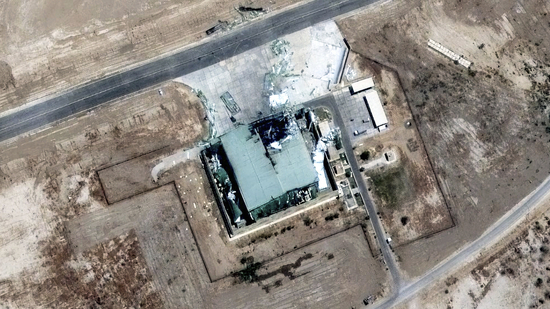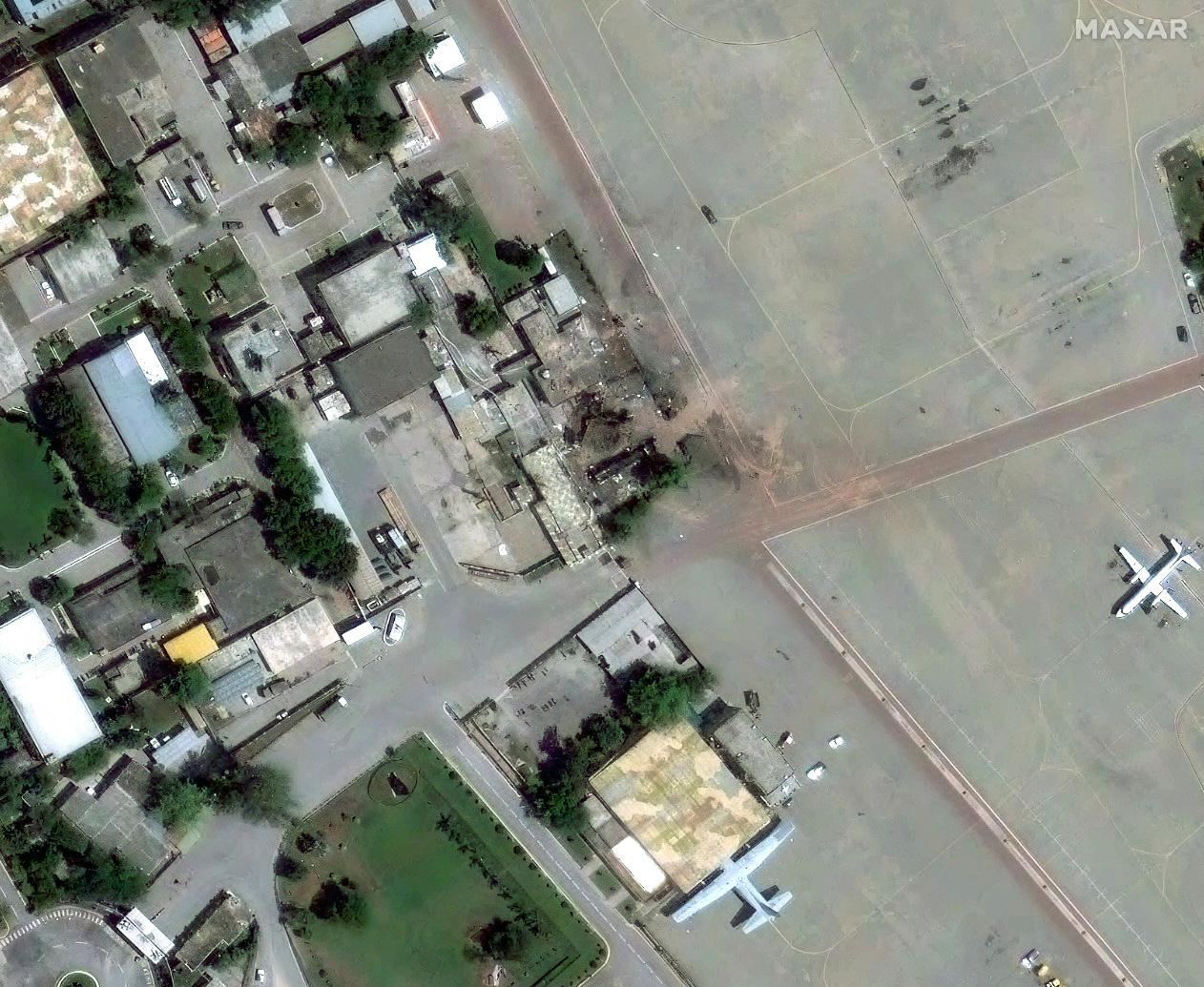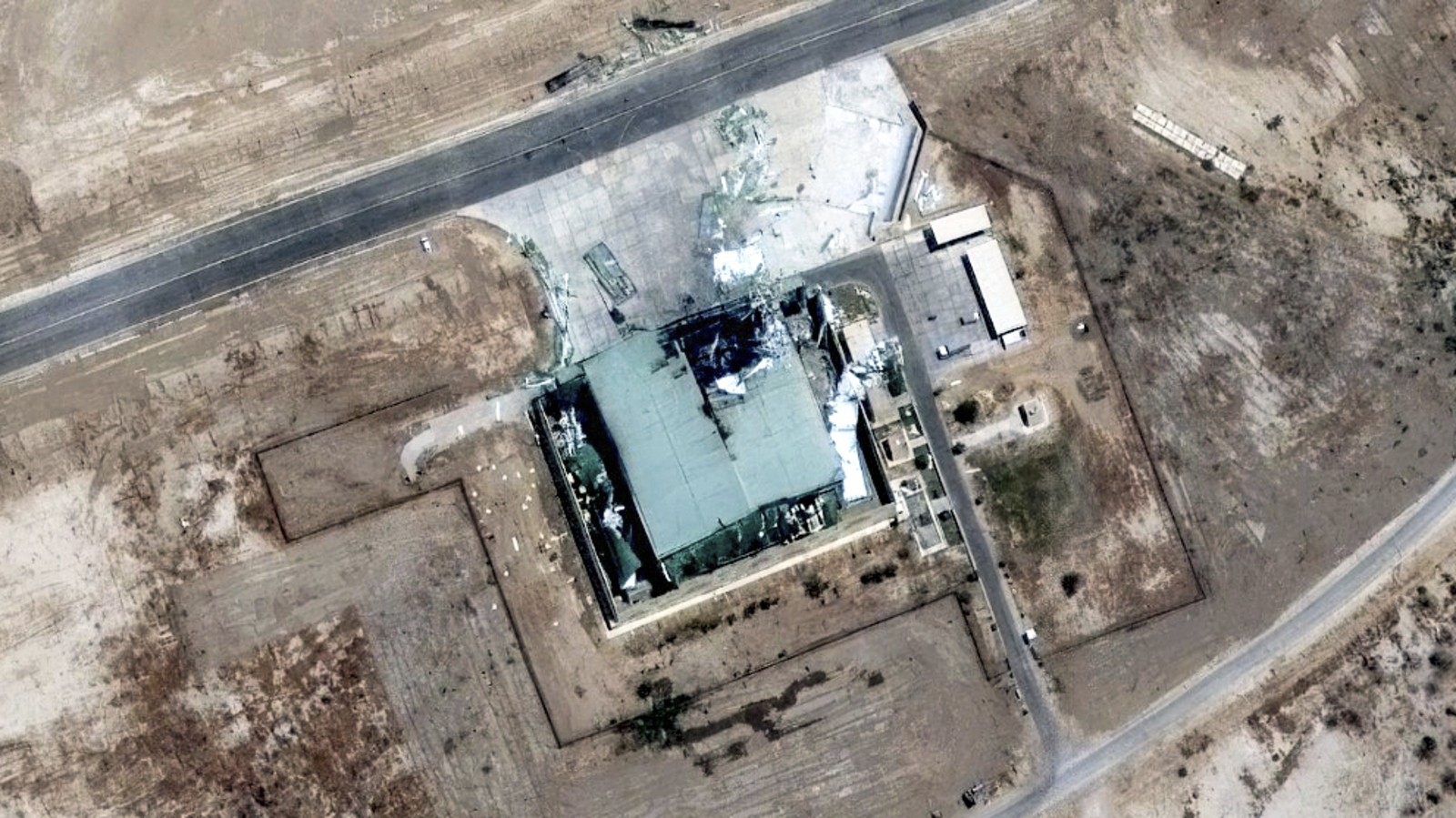Satellite imagery suggests that the damage to runways and structures at airfields across Pakistan was largely caused by Indian strikes during the ‘Operation Sindoor’, according to a report by The New York Times.
 This satellite image provided by Maxar Technologies shows a damaged structure from a military strike at Bholari Air Base in Northern Thatta district, Pakistan, on May 11, 2025. (AP)
This satellite image provided by Maxar Technologies shows a damaged structure from a military strike at Bholari Air Base in Northern Thatta district, Pakistan, on May 11, 2025. (AP)
In retaliation for the terrorist attack in Jammu and Kashmir’s Pahalgam on April 22, the Indian armed forces launched Operation Sindoor on May 7 and targeted terror infrastructure in Pakistan and Pakistan-occupied Jammu and Kashmir.
The four-day military clash between India and Pakistan was the most expansive fighting in half a century between the two nuclear-armed countries, the NYT report added.
High-resolution satellite imagery showed clear damage to buildings used as aircraft hangars at the Pakistani air force’s Bholari and Shahbaz air bases. A large hole nearly 60 feet wide could be seen in the roof of a hangar at Bholari. Debris was spread across the pavement outside, and a wall seemed to have toppled over an adjacent building.
Also Read | ‘Indus Waters Treaty to remain in abeyance till Pakistan…’: Jaishankar
The NYT report added that satellite imagery indicates that while the attacks were widespread, the damage was far more contained than claimed — “and appeared mostly inflicted by India on Pakistani facilities”.
Bholari air base
At Bholari air base, located less than 100 miles from the Pakistani port city of Karachi, India’s defence officials said they had struck an aircraft hangar with a precision attack. The visuals showed clear damage to what looks like a hangar.
 Latest high-quality images from private satellite company Maxar show the before and after extent of damage inflicted upon Bholari Air Base, due to the Indian strike. (REUTERS/ANI) Shahbaz air base
Latest high-quality images from private satellite company Maxar show the before and after extent of damage inflicted upon Bholari Air Base, due to the Indian strike. (REUTERS/ANI) Shahbaz air base
Satellite imagery showed another large hole over 100 feet wide in a hangar at Shahbaz air base, which is used exclusively by the military and damage to a control tower.
 Latest high-quality images from Maxar show the before and after extent of damage inflicted on Pakistan Air Force Base, Jacobabad Shahbaz, due to the Indian strike. (REUTERS/ANI) Nur Khan air base
Latest high-quality images from Maxar show the before and after extent of damage inflicted on Pakistan Air Force Base, Jacobabad Shahbaz, due to the Indian strike. (REUTERS/ANI) Nur Khan air base
The Nur Khan air base, one of the most important in Pakistan, is in close proximity to the Strategic Plans Division, the unit responsible for safeguarding the country’s 170 nuclear warheads, stored in facilities across Pakistan.
 This satellite image provided by Maxar Technologies shows Nur Khan Air Base with damaged buildings after a strike during hostilities with India in Rawalpindi, Pakistan, on May 10, 2025. (AP)
This satellite image provided by Maxar Technologies shows Nur Khan Air Base with damaged buildings after a strike during hostilities with India in Rawalpindi, Pakistan, on May 10, 2025. (AP)
Furthermore, the military’s general headquarters and the joint staff headquarters are housed near Nur Khan in Rawalpindi.
In the new age of high-tech warfare, the NYT report said strikes by both sides, verified by the imagery, appeared to be precisely targeted.
“Where India appears to have had a clear edge is in its targeting of Pakistan’s military facilities and airfields, as the latter stretch of fighting shifted from symbolic strikes and shows of force to attacks on each other’s defence capabilities,” the report said.
The Indian military said it had particularly targeted the runways and other facilities at some of Pakistan’s key air bases and “satellite images showed the damage”, the report said, noting that on May 10, Pakistan issued a notice for the Rahim Yar Khan air base saying that the runway was not operational.
At Sargodha air base, in Punjab Province in Pakistan, the Indian military said it had used precision weapons to strike two sections of the runway.
“Satellite images of the sites Pakistan claimed to have hit are limited, and so far do not clearly show damage caused by Pakistani strikes even at bases where there was corroborating evidence of some military action.”
On the Pakistani officials’ claim that their forces had “destroyed” India’s Udhampur air base, the NYT report said “an image from May 12 does not appear to show damage”.
Following the Indian action, Pakistan attempted to attack Indian military bases on May 8, 9 and 10. The Indian armed forces launched a fierce counter-attack on several Pakistani military installations, including Rafiqui, Murid, Chaklala, Rahim Yar Khan, Sukkur and Chunian.
Radar sites at Pasrur and Sialkot aviation base were also targeted using precision munitions, causing massive damage.
India and Pakistan reached an understanding on May 10 to end the conflict after four days of intense cross-border drone and missile strikes.
